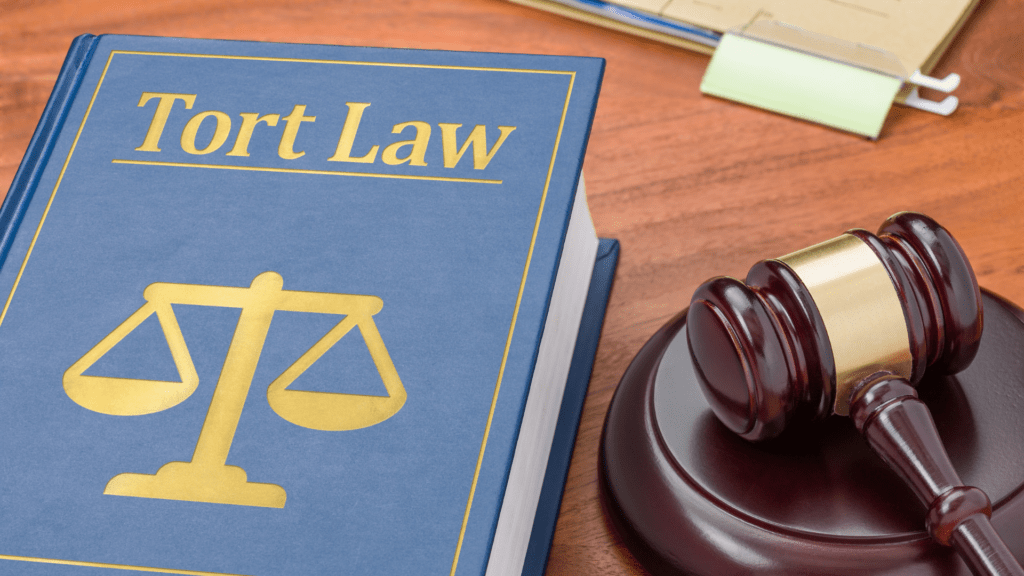In 2024, the legal landscape is witnessing significant developments in mass tort cases, with high-profile litigation shaping the course of consumer protection, public health, and corporate accountability. From groundbreaking victories to emerging concerns, the year has brought to light a myriad of legal implications and updates across a wide range of mass tort cases.
As we delve into an overview of the major mass tort cases in 2024, we will explore the impact and implications of pivotal cases such as:
- asbestos litigation
- tobacco litigation
- talcum powder litigation
- Roundup weed killer litigation
- opioid litigation
- and many others.
These cases not only hold immense significance for the affected individuals but also provide crucial insights into the evolving legal landscape and the collective pursuit of justice. Join us as we navigate through the legal ramifications, consumer impact, and ongoing developments in the most compelling mass tort cases of 2024.
Overview of Major Mass Tort Cases in 2024
In 2024, the legal landscape is marked by significant mass tort cases that have gained widespread attention, shaping the realm of personal injury law and bringing notable entities and issues to the forefront of litigation.
Mass tort cases in 2024 have notably impacted personal injury law, prompting a reevaluation of legal precedents and the responsibilities of various entities. These litigations involve a multitude of plaintiffs who have been affected by a common harm, such as defective products, environmental hazards, or pharmaceutical side effects.
The presence of high-profile defendants, including pharmaceutical companies and manufacturers of consumer products, adds complexity to the legal proceedings, emphasizing the stakes involved in these cases.
Issues such as product liability, environmental negligence, and health risks associated with certain medications form the crux of these mass tort litigations, stirring public discourse and raising critical questions about corporate accountability and public safety.
Asbestos Litigation: A Groundbreaking Mass Tort Case
Asbestos litigation stands as a groundbreaking mass tort case that continues to be a focal point in the legal arena, particularly due to its association with mesothelioma and the extensive research conducted by the RAND Corporation.
Beginning in the early 20th century, asbestos litigation has been shaped by the harmful health effects of asbestos exposure, most notably in the form of mesothelioma. The RAND Corporation has been instrumental in conducting comprehensive studies on the societal, economic, and legal ramifications of asbestos-related claims, providing crucial insights into the complex dynamics of the litigation process. These findings have significantly influenced the evolution of asbestos litigation, informing policy decisions and victim compensation mechanisms.
The enduring impact of asbestos litigation on the legal landscape is evident through the continued emergence of lawsuits against companies responsible for asbestos exposure. The persistent pursuit of justice for affected individuals underscores the significance of this mass tort case, which remains a critical area of concern for legal professionals, public health officials, and advocacy groups.
Tobacco Litigation: A Landmark Victory for Public Health
Tobacco litigation has achieved a landmark victory for public health, driven by the legal actions against major tobacco companies and the consequential Master Settlement Agreement.
One of the most significant developments in tobacco litigation was the emergence of evidence linking smoking to a wide range of health problems, including cancer, heart disease, and respiratory issues. This catalyzed legal challenges against tobacco companies, leading to high-profile court cases and a surge in public awareness about the dangers of smoking.
Prominent tobacco companies such as Philip Morris and R.J. Reynolds found themselves embroiled in protracted legal battles, as plaintiffs sought justice for the harms caused by their products. The intense scrutiny on the industry’s marketing practices and knowledge of health risks reshaped public perception and fueled the push for stricter regulations and accountability.
Central to the advancement of tobacco litigation was the Master Settlement Agreement, a historic accord between tobacco companies and multiple states, which not only resulted in substantial financial awards to compensate for healthcare costs but also mandated strict restrictions on marketing, advertising, and sponsorship, profoundly reshaping the landscape of tobacco regulation.
Talcum Powder Litigation: A Growing Concern for Women’s Health
Talcum powder litigation has emerged as a growing concern for women’s health, notably linked to legal actions against Johnson & Johnson and the alleged association with ovarian cancer.
This legal landscape has witnessed a surge in lawsuits from individuals and families impacted by the use of talcum powder. The allegations center around Johnson & Johnson’s alleged failure to warn consumers about the potential risks, particularly the connection between their talc-based products and ovarian cancer. As these cases unfold, the company faces mounting pressure to address the concerns and provide transparency regarding the safety of their talc products.
The evolving research on talcum powder’s impact on women’s health has sparked intense debates within the scientific and medical communities. While the link between talc use and ovarian cancer remains a contentious topic, the legal actions against Johnson & Johnson have brought this issue to the forefront, prompting rigorous scrutiny and calls for heightened consumer awareness.
Roundup Weed Killer Litigation: A Victory for Consumers & the Environment
The Roundup weed killer litigation has delivered a victory for consumers and the environment, marked by legal battles against Monsanto, the maker of Roundup, and its alleged connection to non-Hodgkin’s lymphoma.
This legal saga has sparked intense debates about the safety of glyphosate, the active ingredient in Roundup, and its potential impact on human health when used over prolonged periods. Thousands of individuals have filed lawsuits claiming that exposure to Roundup has led to their non-Hodgkin’s lymphoma diagnosis. The allegations and subsequent legal proceedings have put a spotlight on the accountability of large corporations in ensuring the safety of their products.
Opioid Litigation: Holding Big Pharma Accountable
Opioid litigation has been instrumental in holding big pharmaceutical companies accountable, as evidenced by high-profile cases and the pivotal role of the Philadelphia jury in shaping legal outcomes.
The impact of the opioid crisis has spurred numerous lawsuits targeting major opioid manufacturers, accusing them of misleading marketing practices and contributing to widespread addiction and fatal overdoses. The involvement of the Philadelphia jury in these cases has been particularly significant, with its decisions setting influential precedents for similar litigations across the country. The ongoing legal battles have sparked debates about regulatory reforms and the responsibilities of pharmaceutical corporations in addressing public health crises.
Camp Lejeune Tort Case Impact
The Camp Lejeune tort case has had a profound impact, particularly in the context of the legal aftermath of 9/11 and its implications for military personnel and their families.
With the Camp Lejeune tort case, the exposure of military personnel and their families to contaminated drinking water has raised crucial questions about the duty of care and accountability within military bases. The significance of this case lies in its connection to broader legal implications for environmental health and safety regulations on military installations. The widespread attention to this case underscores the need for comprehensive reforms to ensure the well-being of service members and their loved ones.
Mesothelioma: A Widely Recognized Mass Tort Case
Mesothelioma stands as a widely recognized mass tort case, notably linked to asbestos exposure and the legal actions involving entities such as Eli Lily.
In the realm of mass tort litigation, mesothelioma holds a significant position due to its strong connection with asbestos exposure, leading to severe health complications. The involvement of major entities like Eli Lily in the legal proceedings further amplifies the impact of these cases on the legal landscape.
The ongoing legal developments surrounding these cases continue to shape the trajectory of mass tort litigation, shedding light on the complexities and the need for comprehensive legal measures to address the implications of mesothelioma. Asbestos-related cases, often entangled within mass tort actions, serve as a critical arena for legal discourse, significantly influenced by historical and ongoing involvement of companies like Eli Lily.
Tylenol Litigation: Emerging Mass Tort Concern
Tylenol litigation has emerged as an emerging mass tort concern, particularly in the context of legal actions related to the alleged link between Tylenol and autism.
This development has sparked intense debate and scrutiny within the legal and medical communities. The issue revolves around the claim that the use of Tylenol during pregnancy may be associated with an increased risk of autism in children. As a result, legal proceedings have been initiated to investigate these allegations, with various plaintiffs coming forward to seek accountability and compensation from the manufacturers.
This has prompted widespread concern among consumers, raising questions about the safety and potential risks of using Tylenol. As the legal landscape continues to unfold, the implications for ongoing legal proceedings are substantial. The outcomes of these cases could set significant precedents and impact future litigation involving similar claims, potentially reshaping the legal framework around product liability and consumer protection.
Paraquat Lawsuits: Significant Developments
Paraquat lawsuits have witnessed significant developments, particularly in the context of legal actions against key entities such as Novo Nordisk and the broader implications for regulatory measures.
The lawsuits stem from allegations that paraquat, a widely used herbicide, is linked to serious health hazards, including Parkinson’s disease. As a result, numerous lawsuits have been filed against manufacturers and distributors, such as Novo Nordisk, alleging that they failed to adequately warn about these risks.
The legal actions have sparked discussions about the need for stricter regulatory measures to ensure the safety of agricultural workers and the public. Consequently, ongoing litigations are closely monitored for their potential impact on future regulations and industry practices.
Paragard IUD: Legal Implications and Updates
The Paragard IUD litigation carries substantial legal implications and ongoing updates, particularly in light of the legal actions involving Johnson & Johnson and the consequential impact on product liability.
The legal landscape surrounding the Paragard IUD litigation has been continually evolving, with various allegations and claims coming to light. Johnson & Johnson, a prominent player in this context, has been facing mounting legal challenges related to the safety and performance of the Paragard IUD.
These legal actions have prompted a closer examination of product liability in the realm of medical devices and have raised questions about potential negligence and accountability. As the litigation progresses, it is essential for stakeholders to stay informed about the developments and their potential implications on future cases and regulatory standards.
Firefighting Foam (AFFF) Litigation Overview
The firefighting foam (AFFF) litigation presents a comprehensive overview of legal actions against manufacturers, the impact of Aqueous Film-Forming Foam, and the associated concerns regarding PFAS chemicals.
In recent years, the AFFF litigation has gained significant attention due to the widespread use of firefighting foam containing PFAS chemicals. These chemicals have been linked to adverse health effects, environmental contamination, and potential groundwater pollution.
Manufacturers of AFFF are facing mounting legal challenges as individuals, municipalities, and environmental groups file lawsuits, alleging that the use of this foam has led to the release of hazardous substances.
The implications of AFFF extend beyond legal actions, as the environmental impact and the health risks associated with exposure to PFAS chemicals continue to raise concerns on a global scale.
Hernia Mesh Lawsuits: Ongoing Legal Battles
Hernia mesh lawsuits continue to be embroiled in ongoing legal battles, especially in the context of legal actions involving entities like 3M and DuPont, and the implications for product liability.
The lingering legal disputes surrounding hernia mesh have been fueled by allegations of design defects, inadequate warnings, and misrepresentation of safety information, leading to severe complications for patients who underwent hernia repair with these products. The involvement of prominent entities including 3M and DuPont further intensifies the complexity and scale of these litigations.
CPAP Machine Recall: Impact on Consumers and Legal Proceedings
The CPAP machine recall has significant implications for consumers and legal proceedings, particularly in light of actions involving entities like Johnson & Johnson, Philips, and Respiroincs.
The repercussions of the CPAP machine recall have spread far and wide, causing distress among individuals reliant on these devices for improved sleep apnea management. With the potential for compromised safety and performance, consumers face the daunting task of finding alternative solutions and navigating potential health risks.
The legal landscape has been stirred as various entities have become embroiled in litigation tied to the repercussions of the recall. Johnson & Johnson, Philips, and Respiroincs are in the spotlight, facing legal challenges and seeking to address the fallout from the defective products. Ongoing legal proceedings are closely monitored as affected individuals seek remedies and entities strive to manage their liability in this complex and evolving situation.
Talcum Powder Lawsuits: Current Status and Implications
The talcum powder lawsuits encompass the current status and notable implications, particularly in the context of legal actions involving Johnson & Johnson and the ongoing legal developments.
These lawsuits have garnered significant attention due to claims of talcum powder being linked to ovarian cancer and mesothelioma. Johnson & Johnson, a major player in this scenario, has faced numerous lawsuits alleging that they failed to disclose the potential health risks associated with their talc-based products. This has led to substantial legal battles and hefty settlements, drastically impacting the company’s reputation and finances. The evolving legal landscape in relation to talcum powder lawsuits has raised concerns within the industry, triggering widespread implications for product liability, consumer protection, and corporate responsibility.
Tepezza Hearing Loss: Legal Actions and Future Considerations
The Tepezza hearing loss cases entail legal actions and critical future considerations, especially in light of the legal actions involving pharmaceutical entities like Eli Lily and the implications for consumer safety.
These cases are significant because they highlight the potential impact of pharmaceutical products on the health and well-being of consumers. The involvement of Eli Lily has brought attention to the need for stringent monitoring and regulation of drug side effects.
As these cases unfold, it’s crucial to consider the broader legal landscape and how it may influence future product development, marketing, and consumer protection laws. The outcome of these cases will likely set precedents for similar situations, shaping the responsibilities of pharmaceutical companies and their accountability for the safety of their products.
Exactech Knee & Ankle Recall: Legal Ramifications and Developments
The Exactech knee and ankle recall carries significant legal ramifications and ongoing developments, especially concerning product liability and the consequential impact on affected consumers.
The legal implications of the recall extend beyond the immediate need for consumer safety to encompass a complex framework of product liability laws. This includes legal doctrines such as strict liability, negligence, and breach of warranty, opening the door for potential litigation against the manufacturer and other parties involved. As the legal landscape continues to evolve, affected consumers and their legal representatives face the challenge of navigating the intricate web of regulations and litigation processes.
The ongoing developments in the legal arena are closely monitored by legal experts, as they could set significant precedence for future product recall cases and contribute to the refinement of consumer protection laws.
Hair Relaxer Lawsuits: Consumer Impact and Legal Standing
Hair relaxer lawsuits have far-reaching consumer impact and critical legal standing, particularly in the context of legal actions involving products such as Suboxone and their implications for consumer safety.
The increasing number of lawsuits related to hair relaxer products are indicative of the significant concerns surrounding consumer safety and product liability. These lawsuits underscore the need for strict regulations and thorough testing of cosmetic products to ensure they do not pose any risks…
Legal actions involving products like Suboxone provide a framework for examining liability and accountability in the pharmaceutical industry. The outcomes of such litigation can set precedents for future cases involving consumer products, emphasizing the broader legal landscape.
Suboxone Tooth Decay Lawsuits: Legal Progress and Consequences
The Suboxone tooth decay lawsuits signify notable legal progress and consequential outcomes, especially in light of legal actions involving products like Bard PowerPort and the broader implications for consumer safety.
These lawsuits have shed light on the potential risks associated with Suboxone use, particularly concerning dental health. The legal landscape surrounding this issue is evolving as claimants seek accountability and justice.
The involvement of products like Bard PowerPort in legal actions has drawn attention to the responsibilities of manufacturers in ensuring product safety.
Consumer safety concerns and accountability in pharmaceutical and medical device industries are at the forefront of these legal battles, reflecting the broader implications for public health and corporate accountability.
Bard PowerPort Litigation: Recent Updates and Legal Proceedings
The Bard PowerPort litigation entails recent updates and ongoing legal proceedings, particularly concerning products like Elmiron and Zantac and their implications for consumer safety.
These legal actions have brought significant attention to consumer safety concerns, as the implications of the products involved are being thoroughly examined. The Bard PowerPort litigation has sparked discussions about the broader legal landscape and the need for enhanced regulatory measures to safeguard consumers from potentially harmful medical products.
Parallel legal proceedings involving products like Elmiron and Zantac have also contributed to the growing scrutiny of the pharmaceutical industry as a whole, highlighting the importance of comprehensive legal oversight in protecting public health.
MDL Dockets: Important Resources for Mass Tort Cases
MDL dockets serve as crucial resources for mass tort cases, especially in light of legal actions involving entities like Sanofi and Boehringer Ingelheim and their impact on the coordination of complex litigations.
The creation of MDL dockets consolidates similar cases, streamlining the pretrial proceedings. This ensures efficiency in handling the massive volume of lawsuits while maintaining a fair legal process.
In the context of Sanofi and Boehringer Ingelheim, MDL dockets play a significant role in harmonizing disparate cases related to their products, like Pradaxa and Zantac, respectively. Through this consolidation, it facilitates consistent rulings, reduces duplicative discovery, and helps in achieving resolutions that serve justice to the affected individuals.
Frequently Asked Questions
What are mass tort cases?
Mass tort cases are civil lawsuits that involve a large number of plaintiffs who have suffered similar injuries or damages from the same defendant or product. These cases are typically filed in state or federal court and are often related to defective products, environmental pollution, or pharmaceutical drugs.
What are the major mass tort cases in 2024?
The major mass tort cases in 2024 include lawsuits against major pharmaceutical companies for their role in the opioid epidemic, lawsuits against manufacturers of defective medical devices, and lawsuits against companies for environmental pollution and toxic exposure.
How are mass tort cases different from class action lawsuits?
Mass tort cases involve individual lawsuits that are grouped together due to similar injuries or damages, while class action lawsuits involve a large group of people with similar claims represented by one or a few plaintiffs. In mass tort cases, each plaintiff may have different damages and may receive different compensation, while in class action lawsuits, all plaintiffs typically receive the same compensation.
How long do mass tort cases typically take to resolve?
The length of time it takes to resolve a mass tort case can vary greatly depending on the complexity of the case and the number of plaintiffs involved. Some cases may take several years before a settlement or verdict is reached, while others may be resolved more quickly.
What can I expect if I join a mass tort case?
If you join a mass tort case as a plaintiff, you can expect to have your case reviewed by an attorney and potentially be included in a group of plaintiffs seeking compensation. You may also be required to provide evidence and attend court proceedings.
Can I still join a mass tort case if I missed the initial filing deadline?
In most cases, you can still join a mass tort case even if you missed the initial filing deadline. However, it is important to consult with an attorney as soon as possible to determine your options and eligibility to join the case.





